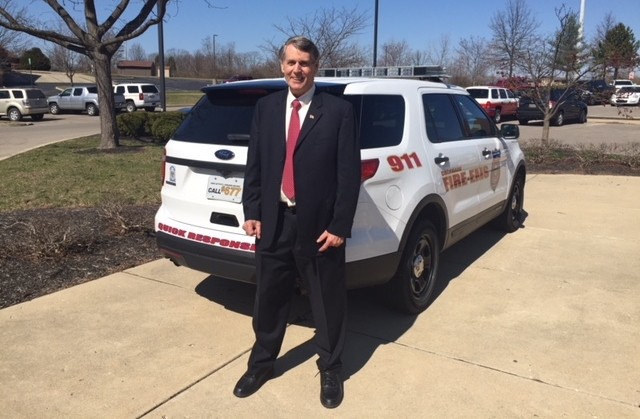
UC community paramedicine programs offer hope for opioid crisis in Ohio
Larry Bennett, chair of the fire science and emergency management program at the University of Cincinnati, personally invites the public to attend an open panel discussion and keynote address on March 12 to learn how Ohio communities can unify to address concerns like the current heroin epidemic.
Professionals and leaders from local fire, health, law enforcement and emergency medical services (EMS) organizations will discuss how community paramedicine and Quick Response Teams (QRTs) impact the local communities, and how to expand the current outreach efforts. Hamilton County Commissioner Denise Driehaus will be the keynote, speaking in support of the establishment of a county-wide QRT.
The QRT in Colerain Township visits homes of citizens recently revived by Narcan and offer them transport to a treatment facility. Community paramedicine services in Springfield Township may include follow-ups for recently discharged patients, medical support for chronic health issues, and referrals to community support programs.
Almost 85% of the nearly 250 individuals who received 'overdose follow-ups' since July 2015 have entered some type of treatment.
Colerain Township QRT Program
The QRT in Colerain Township visits homes of people recently revived by Narcan to offer them transport to a treatment facility. Community paramedicine services in Springfield Township may include follow-ups for recently discharged patients, medical support for chronic health issues, and referrals to community support programs.
These services address gaps in local primary care services, and enable EMS personnel to maintain an emergency response presence in low call-volume areas and, most importantly, save lives. Since Colerain launched their QRT over a year ago, overdoses have declined by 35 percent. Almost 85% of the nearly 250 individuals who received “Overdose Follow-ups” since July 2015 have entered some type of treatment.
Ten UC professors from multiple disciplines (fire science, social work, medicine, nursing and counseling) are collaborating to present this program, reflecting how combined effort is required to tackle large-scale community health issues like heroin overdoses and frequent 911 calls. The program demonstrates how collaborative, action-based services can combat nation-wide problems like addiction and in health care gaps.
Bennett hopes that increased public awareness and empowerment will attract attention from more lawmakers, hospitals administrators, and any other potential partners. Establishing policy and securing funding are top priorities for these critical programs to be sustainable and scalable.
Communities and individual citizens often do not know where to start in addressing epidemics and complicated issues of this magnitude, and Bennett wants to help connect the dots between problem and solution. He would love to see a county- or state-wide network for paramedicine and QRTs developed in the near future. Passion for his field drives Bennett’s pioneering spirit.
“I enjoy being an agent of change to move the industry I love, fire and EMS, to a higher level,” he said.
The full course includes two days of on-site programming on March 12 and 13, 2018, and an online component March 14-16. For the first time, UC is also offering a one-credit option for an abbreviated version of the course. Cincinnati Quick Response Team members & Violet Township Community Paramedics will be on site to provide ride-alongs so participants can get a first-hand view of these services in action.
For more information about the community paramedicine course or panel, please contact Larry Bennett in Fire Science and Emergency Management at lawrence.bennett@uc.edu.
Featured image at top: Larry Bennett stands with a Colerain Township QRT vehicle. Photo/provided.
Next Lives Here
The University of Cincinnati is classified as a Research 1 institution by the Carnegie Commission and is ranked in the National Science Foundation's Top-35 public research universities. UC's students, alumni and faculty investigate problems and innovate solutions with real-world impact. Next Lives Here.
Related Stories
News Cincinnati loved in 2025
January 2, 2026
The story of prohibition bootlegger George Remus was among WLWT's favorite segments in 2025. UC Law Professor Christopher Bryant spoke with journalist Lindsay Stone about Remus using a temporary insanity defense during a murder trial.
What to know about this year’s big tax changes
January 2, 2026
Local 12 reported that taxpayers can expect some major changes this tax season. Gary Friedhoff, adjunct instructor at the University of Cincinnati’s Carl H. Lindner College of Business, recently spoke to Local 12 about how to avoid surprises.
Study finds police officers face higher long-term health risks
January 2, 2026
J.C. Barnes, a University of Cincinnati professor, is interviewed by Spectrum News about new research showing that the physical and psychological demands of law enforcement can contribute to earlier deaths.
